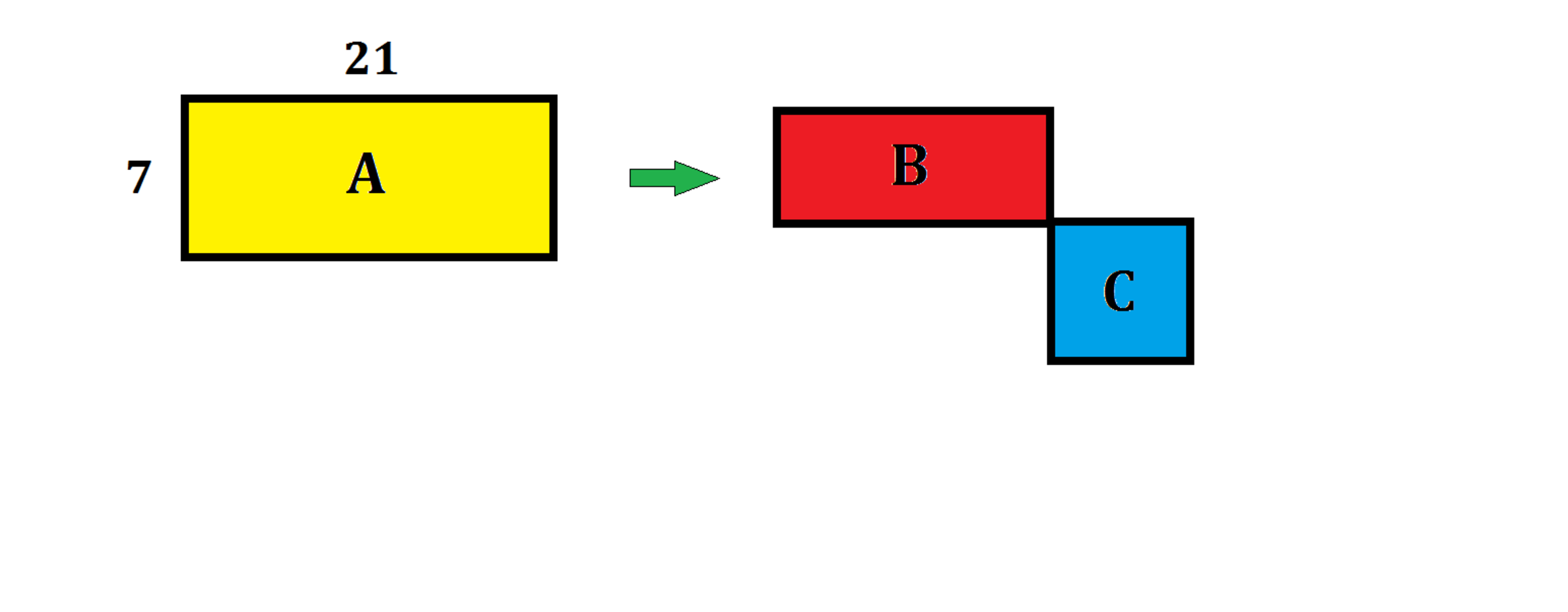Rouge Rope

A rectangle A of 7 cm. width and 21 length is surrounded by a rope of the perimeter's length. Then the same rope is relocated to border rectangle B and square C such that rectangles A & B are similar as shown.
What is the smallest total areas of rectangle B and square C in ?
The answer is 84.
This section requires Javascript.
You are seeing this because something didn't load right. We suggest you, (a) try
refreshing the page, (b) enabling javascript if it is disabled on your browser and,
finally, (c)
loading the
non-javascript version of this page
. We're sorry about the hassle.
The rope's length = rectangle's perimeter = 2(7+21) = 56.
If we let x = rectangle B's width, B's length = 3x. Hence, square C's side = (56 - 8x)/4 = 14 - 2x.
f(x) = total areas of B+C = 3 x 2 + ( 1 4 − 2 x ) 2 = 7 x 2 - 56x + 196
f '(x) = 14x - 56 = 0; x = 4. So the minimum is at f(4) = 84.